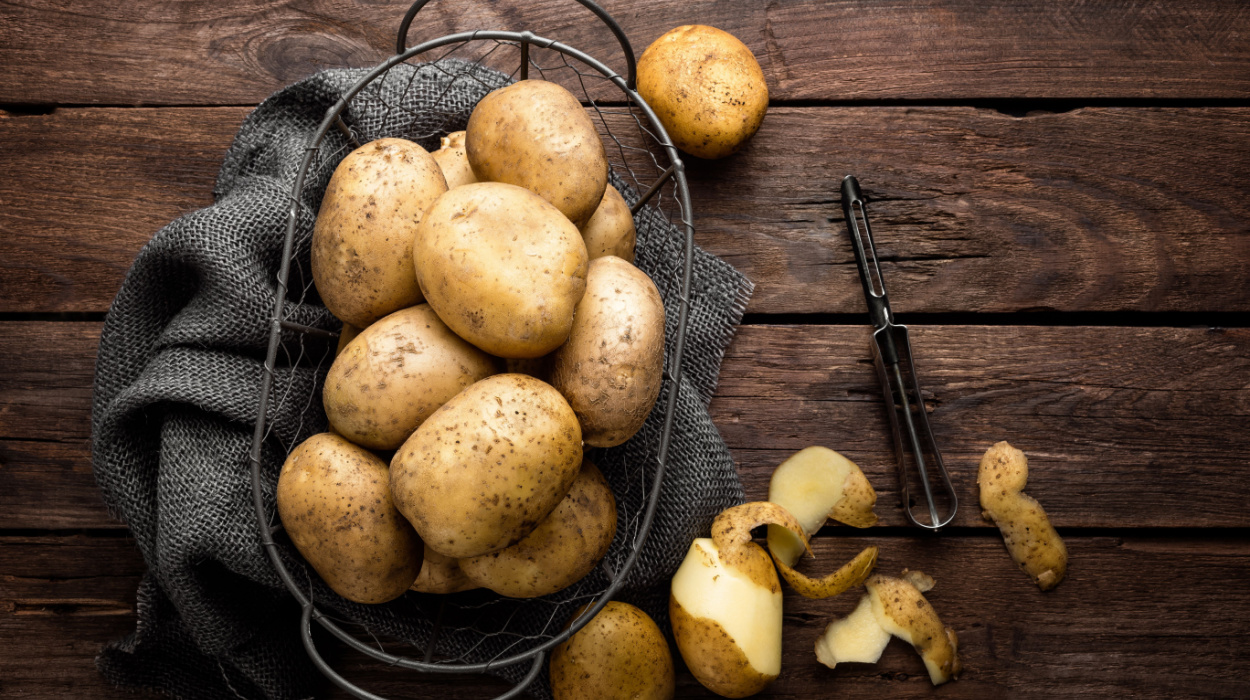How To Lose Body Fat For Women: 4 Ways For Females To Get Rid Of Body Fat In 2024
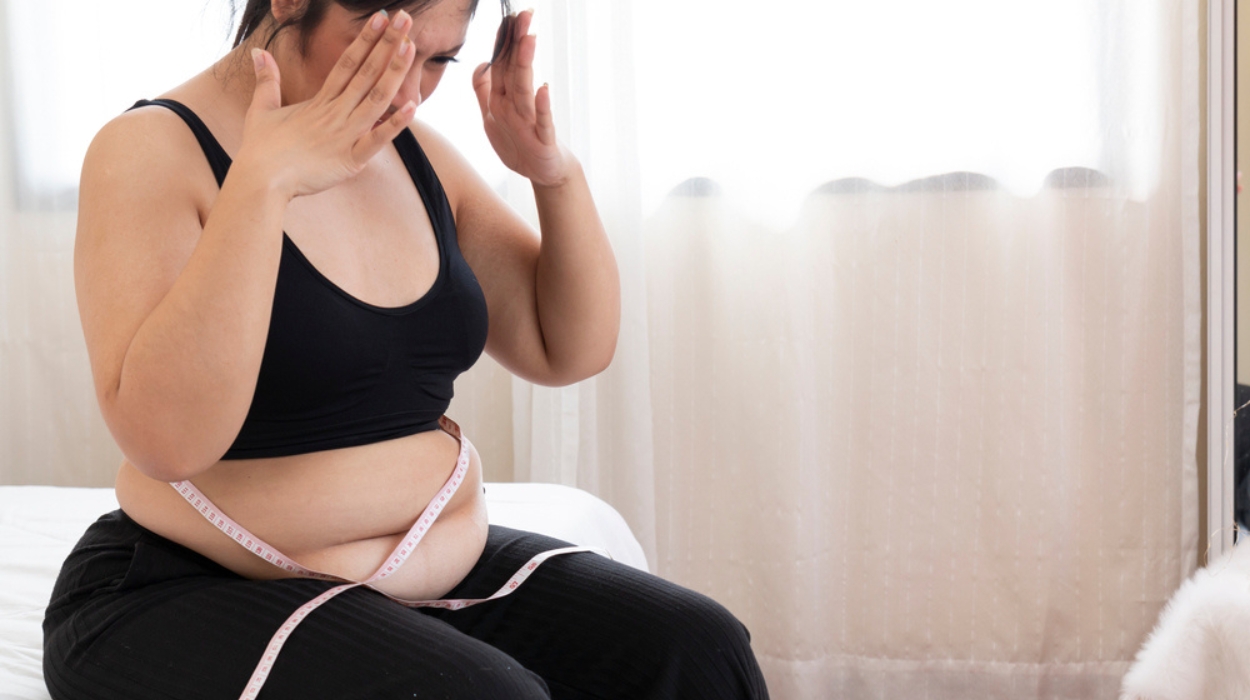
If you want to know how to lose body fat for women, know that women naturally carry more body fat compared to men.
This may or may not come as a surprise to some, but ladies naturally rock a higher body fat percentage compared to men. Mother Nature didn’t do this out of spite, as there are biological and evolutionary reasons at play. The idea of a perfect body composition is elusive and unfortunately, the longing to look a certain way often outweighs a desire to achieve optimal health among women.
However, if fat loss is the goal, there are things women can focus on to burn fat and be the best version of themselves. The strategies listed below will both improve your overall health and facilitate full body fat loss.
How To Lose Body Fat For Women?
The best ways to lose body fat for women are to:
- Eat a whole food based diet that limits highly processed foods, creates a calorie deficit, and doesn’t hinge on supplements.
- Consume enough healthy fluids including water, milk, coffee, coconut water, and some fruit juices while avoiding sugary beverages and alcohol.
- Incorporate resistance and cardiovascular exercise into your routine. Aim for at least two days per week of strength training and 75-150 minutes of moderate to vigorous intensity cardio per week.
- Keep stress levels low through stress reduction techniques and lifestyle changes.
Effective Ways For Women To Reduce Body Fat

Whether it’s stubborn belly fat or excess body fat elsewhere, full body fat loss is the only way to lose weight in certain areas of the body, and here are four proven ways to do just that.
Featured Partner Offer

PhenQ
- Helps to burn fat
- Crushes food cravings
- Boosts energy and balances mood
- High-quality formula
Money Back Guarantee and Free US Shipping
Eat A Balanced Diet
Diet will always come first because you can’t exercise your way out of an unhealthy diet. It’s difficult to know what a healthy diet is these days, but the basic idea is to eat a variety of whole foods including vegetables and fruits, whole grains, nuts and seeds, legumes, low-fat dairy, and lean meats and seafood.
Avoid Nutrient Poor Foods
Foods that you should avoid are highly processed foods, sugary beverages, and alcohol. Highly processed foods include fast food, ready meals, and many pre-packaged snacks like chips, candies, sauces, and condiments. Many of these foods contain additives and other ingredients that are potentially harmful to the gut microbiome.[1]
Create A Calorie Deficit
In order to lose fat, you should choose foods generally low in calories and high in protein and fiber to promote fullness. If you consistently eat fewer calories than are burned, you will lose weight because you have created a calorie deficit.
But fat loss doesn’t have to mean weight loss, but often they will overlap. If you combine diet with exercise to shed body fat and gain muscle at the same time, you may or may not lose weight because muscle is heavier than fat.
Don’t Rely On Supplements
Fat-burning supplements may or may not aid in fat loss. In the United States, supplements are not regulated by the Food and Drug Administration (FDA), so always interpret claims and statements made by supplement brands with caution.
The main fat-burning ingredients in these products are often natural, thermogenic compounds like coffee, green tea extract, capsaicin, black pepper extract, and green coffee bean extract. Thermogenics may contribute to a very small amount of extra calories burned, but it is often negligible. Other supplements contain ingredients that work to suppress or decrease appetite.
Consume Enough Healthy Fluids
Drinking enough water is a cheap, effective, and straightforward strategy to lose weight.
It’s important to avoid drinking your calories from sugary coffee drinks, sodas, sports drinks, and some fruit juices to wine, beer, and cocktails. Consuming liquid carbohydrates in this way spikes blood sugar more so than consuming carbohydrates in the form of food. Also, most sugary drinks lack any other nutritional benefits like protein, fiber, or vitamins.
You should aim to drink mostly water for hydration. Bear in mind that adding sugar and cream to your coffee or buying a store-bought smoothie may end up counteracting the benefits. Try to keep things low-fat by making beverages at home and keeping an eye on added sugars.
You can also consider flavored water options like adding fruit and herbs. Another way to increase fluid intake is to eat fruits with a high water content like watermelon, grapes, strawberries, citrus fruits, and pineapple.
How much fluid should women be consuming daily? According to the U.S. National Academies of Sciences, Engineering, and Medicine,[2] the optimal fluid intake for women is 11.5 cups or 2.7 liters, including 20% of which from food, and drink the remaining 9.2 cups through beverages.
Exercise
Exercise is the other main piece to the fat loss puzzle. Fat is created in the body when there is an excess amount of energy (calories) consumed. If it isn’t used, that energy is stored in the form of fat. To access those fat stores and burn calories, you’ll need to exercise.
Many workouts combine strength and endurance training, but it’s about finding the right balance that works for you.
Cardiovascular exercise is particularly important for heart health and targeting visceral fat, which surrounds internal organs in the abdomen area. It’s not as visible as subcutaneous fat, which is the fat we often associate with stubbornly sticking to the backs of our arms, thighs, and lower belly. High percentages of visceral fat are associated with metabolic dysfunction like diabetes, high blood pressure, and high cholesterol.
High Intensity Vs. Low-Intensity Cardiovascular Exercise
To burn fat is to use the body’s stored fat for energy. While aerobic exercise is excellent for fat burning regardless of intensity, prioritize doing the type of exercise that you enjoy the most and can stick to consistently.
Carbohydrates are burned first during high-intensity exercises like HIIT classes, powerlifting, or sports where you are active in short, intense bursts of energy. So, technically more fat is burned for fuel through longer lower-intensity workouts.
Resistance Exercise
Strength training can also serve as an aerobic workout that burns calories. Gaining muscle mass improves metabolism, which helps you to burn more calories at rest. Body recomposition is losing fat mass and gaining muscle mass simultaneously, which is an effective way to reduce body fat.
Stress Reduction
As humans, we have a built-in “fight or flight” response. During this stress response,[3] heart rate and blood pressure increase and muscles tense, among other physical and psychological responses. It’s designed to help us be more physically capable of taking on or avoiding danger.
This process hasn’t necessarily caught up to modern times and our bodies tend to overreact to common stressors like work, kids, relationships, etc.
Chronic or repeated stress can take a huge toll on someone’s overall health, including weight gain. This is because the hormone cortisol is released as a part of the stress response. Elevated cortisol is connected to a higher likelihood of developing obesity.[4]
Life throws things at us, and you definitely can’t avoid stress altogether. However, try and take note of things that consistently cause you stress. Then you can find strategies to help manage that stress.
In the meantime, try doing activities that can lower stress levels like yoga, spending time outdoors, meditation, and spending time with loved ones. Exercise in any form and maintaining a healthy diet are going to help with stress levels in addition to their added benefits for managing body weight.
Why Do Women Store Fat Differently From Men?
Men and women are clearly very different both physiologically and psychologically. One of these differences lies in how we store fat.[5] Women are more likely to store fat in the hips, thighs, and butt whereas men are more likely to have abdominal fat. Men are more likely to store visceral fat and women are more likely to store subcutaneous fat.
Researchers haven’t exactly determined why, but women tend to be better at storing fat[6] than men. This results in men being able to burn fat more easily. There is likely an evolutionary explanation behind this. The hormone estrogen[7] leads women to retain more fat for pregnancy. Our bodies are smart; they are built a certain way for protective measures. Women have subcutaneous fat storage in the breasts, and around the hips and thighs for breastfeeding and childbearing.
Men also have a greater propensity to build muscle due to higher testosterone levels. Testosterone[8] is associated with higher rates of muscle protein synthesis, which is the process of repairing and building muscle. With more muscle comes a higher metabolism and burning more calories at rest.
Another thing that may frustrate some women trying to burn fat or lose weight is that men likely have a higher energy expenditure (they burn more calories) during exercise. In this study[9] of 29 young adults, males consistently had a higher energy expenditure during different measures and intensities of squat training.
What Is A Healthy Body Fat Percentage For Women?

There are no current guidelines that represent an ideal body fat percentage for adults. Measures of body composition are difficult to gather and interpret by the average person.
There are a few high tech and expensive machines that accurately measure body fat, but they are only really used in medical and research facilities.
A study published in the British Journal of Nutrition used a novel approach to develop a formula to estimate[10] body fat percentage using body mass index and age.
Body Fat % (women) = (1.20 x BMI) + (0.23 x age) – 5.4
However, if you want to know what your body fat percentage is, consider seeking a personal trainer who will have the appropriate tools to give you a reliable measurement. There are a few other ways to estimate body fat at home, but it’s often not an accurate representation.
Featured Partner Offer
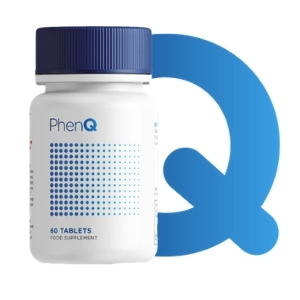
Top Tips For Women To Get Started
- Make a food plan for the week. Plan meals to make sure you are eating healthy meals and have all of the ingredients to cook at home.
- Try a meal subscription service. This helps you avoid unhealthy foods at the grocery store.
- Focus on your “why.” Getting healthier requires consistent goal setting, motivation, and accountability. Having a “why” at the forefront of your mind helps you accomplish this.
- Find ways to get active that you enjoy. This includes both resistance and cardio exercises. It’s much easier to get fit if you find a workout you somewhat enjoy or at least people you like doing it with.
- Don’t rely on willpower. The truth is that willpower and motivation fail us in times of stress, which life inevitably throws at us. Remove unhealthy foods from the house, pre-book your workout class, lay out your exercise clothes the night before, hire someone to write a meal plan for you, etc. Do whatever it takes to take the pressure off yourself and create fail-proof systems.
- Have patience. Fat loss as a woman is no fast or straightforward feat. Work hard and be kind to yourself.
Conclusion
If you’re worried about how to lose fat and you’re a female, know that women tend to carry a bit more fat, but that doesn’t mean we are lazier or less healthy than men. Our bodies are built differently and for different biological purposes.
It’s not uncommon for many women to wonder how to lose body fat. There’s no real magical solution to lose fat or weight loss. It requires planning, consistency, and a holistic approach to keep off excess weight long term.
Frequently Asked Questions
The recommendations are similar for both genders and they are to eat a balanced diet, drink enough water, do both cardio and resistance training, and aim to keep stress levels low.
No fat loss is easy, but losing fat for females is entirely possible with consistent healthy strategies.
It’s safe to lose roughly 2% of body fat per month, but 1% is a more realistic goal.
Women are likely to lose fat around the waist first, then, if fat loss continues, the fat stores in the arms, hips, and thighs start to diminish.
Resources
- Raoul, P., Cintoni, M., Palombaro, M., Basso, L., Emanuele Rinninella, Gasbarrini, A. and Maria Cristina Mele (2022). Food Additives, a Key Environmental Factor in the Development of IBD through Gut Dysbiosis. Microorganisms, [online] 10(1), pp.167–167. doi:https://doi.org/10.3390/microorganisms10010167.
- Dietary Reference Intakes for Water, Potassium, Sodium, Chloride, and Sulfate. (2005). [online] National Academies Press eBooks. doi:https://doi.org/10.17226/10925.
- Chu, B., Marwaha, K., Sanvictores, T. and Ayers, D. (2022). Physiology, Stress Reaction. [online] Nih.gov. Available at: https://www.ncbi.nlm.nih.gov/books/NBK541120/.
- Hewagalamulage, S.D., Lee, K., Clarke, I.J. and Henry, B.A. (2016). Stress, cortisol, and obesity: a role for cortisol responsiveness in identifying individuals prone to obesity. Domestic Animal Endocrinology, [online] 56, pp.S112–S120. doi:https://doi.org/10.1016/j.domaniend.2016.03.004.
- Christensen, P., Thomas Meinert Larsen, Westerterp-Plantenga, M.S., Macdonald, I.A., J. Alfredo Martínéz, Svetoslav Handjiev, Poppitt, S.D., Hansen, S., Ritz, C., Astrup, A., L. Pastor-Sanz, Finn Sandø‐Pedersen, Pietiläinen, K.H., Sundvall, J., Mathijs Drummen, Taylor, M.A., Navas‐Carretero, S., Handjieva‐Darlenska, T., Brodie, S. and Silvestre, M.P. (2018). Men and women respond differently to rapid weight loss: Metabolic outcomes of a multi-centre intervention study after a low-energy diet in 2500 overweight, individuals with pre-diabetes (PREVIEW). Diabetes, Obesity and Metabolism, [online] 20(12), pp.2840–2851. doi:https://doi.org/10.1111/dom.13466.
- Bredella, M.A. (2017). Sex Differences in Body Composition. Advances in Experimental Medicine and Biology, [online] pp.9–27. doi:https://doi.org/10.1007/978-3-319-70178-3_2.
- Steiner, B. and Berry, D.C. (2022). The Regulation of Adipose Tissue Health by Estrogens. Frontiers in Endocrinology, [online] 13. doi:https://doi.org/10.3389/fendo.2022.889923.
- Oup.com. (2023). Available at: https://academic.oup.com/jcem/article/107/8/e3254/6582758.
- Indya del-Cuerpo, Jérez-Mayorga, D., Luís Javier Chirosa, María Dolores Morenas-Aguilar, Mariscal-Arcas, M., López-Moro, A. and Pedro Delgado Floody (2023). Males Have a Higher Energy Expenditure than Females during Squat Training. Nutrients, [online] 15(15), pp.3455–3455. doi:https://doi.org/10.3390/nu15153455.
- Yair Lahav, Epstein, Y., Kedem, R. and Schermann, H. (2018). A novel body circumferences-based estimation of percentage body fat. British Journal of Nutrition, [online] 119(6), pp.720–725. doi:https://doi.org/10.1017/s0007114518000223.
More from Weight Management
-
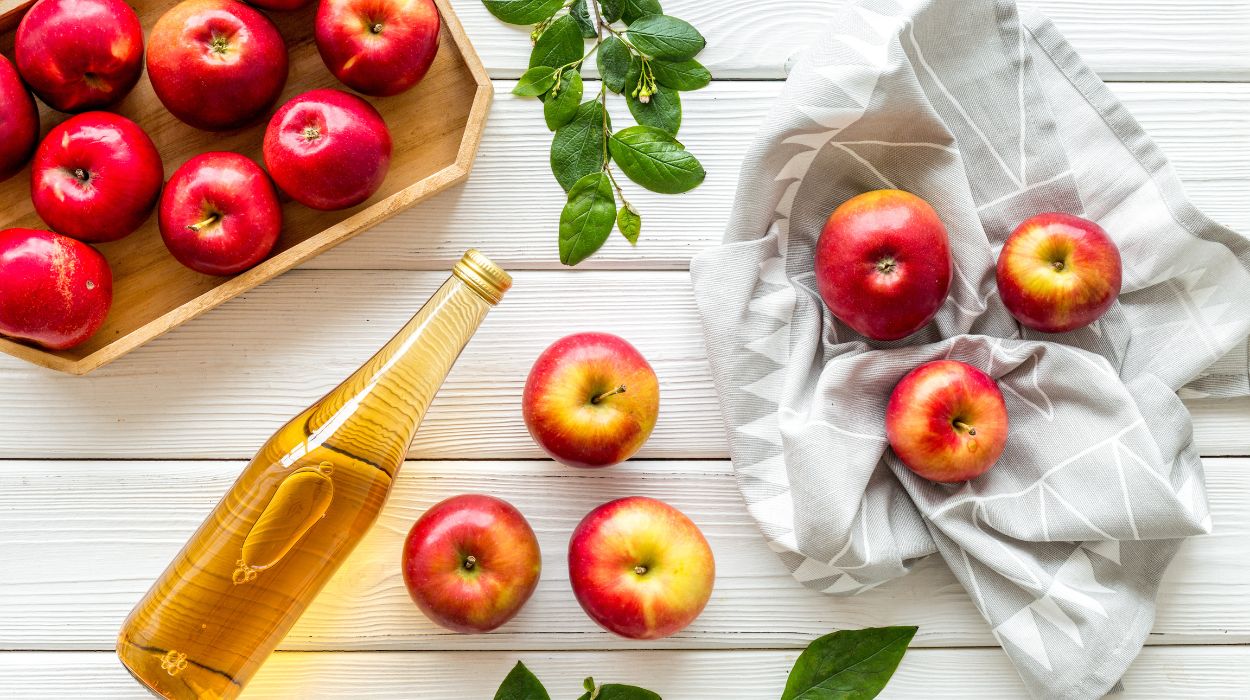
How To Drink Apple Cider Vinegar For Weight Loss In 1 Week In 2024
January 10, 2024
Taking apple cider vinegar has become a sensation for its supposed health benefits, despite its sour taste. Apple cider vinegar may…Read more -
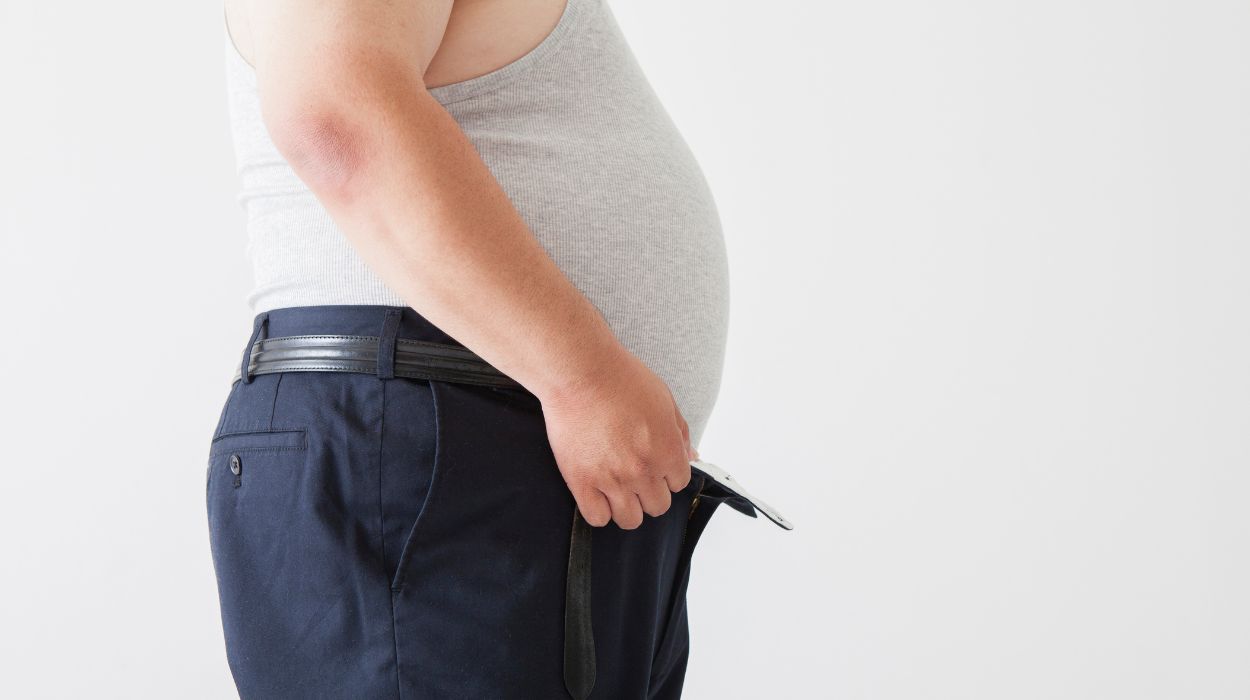
How To Lose Belly Fat After 50: Here’s 10 Tips For People Over 50 To Try In 2024
December 27, 2023
Losing weight over 50 can feel challenging, especially in stubborn areas like the abdomen. As we age, hormonal changes, slower metabolism,…Read more -
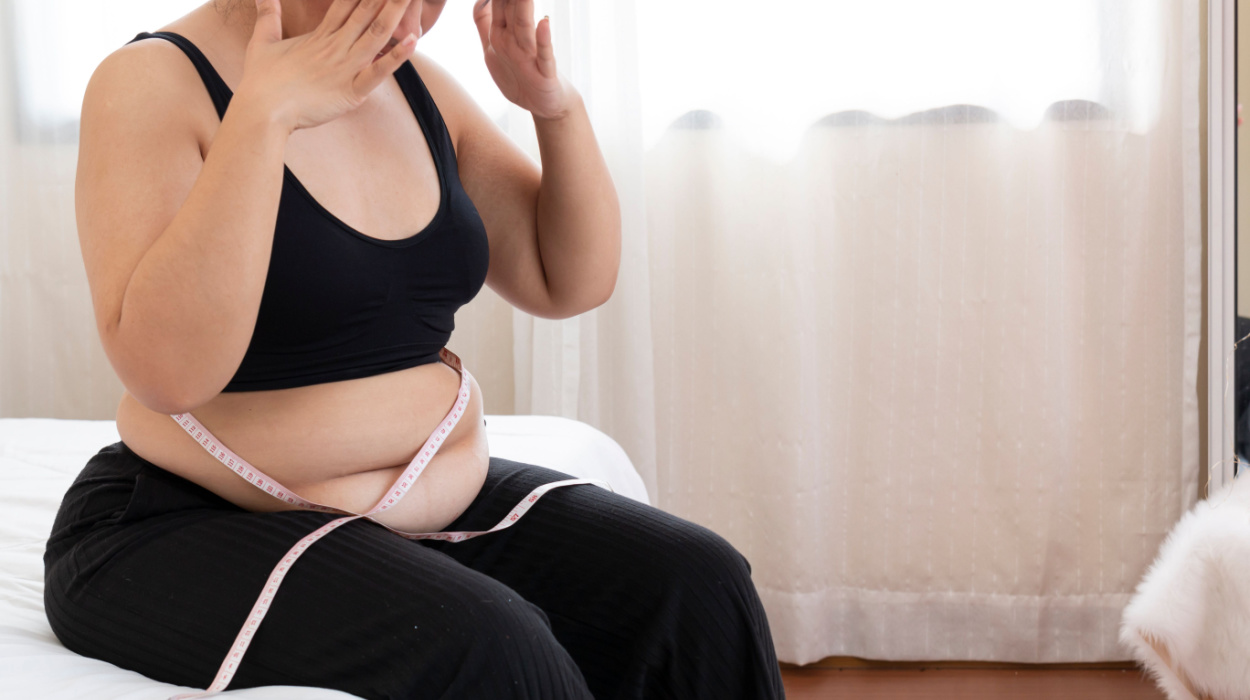
How To Lose Weight With Hypothyroidism – 10 Ways You Should Try In 2024
December 22, 2023
Hypothyroidism[1] is a condition that occurs when a person has low levels of thyroid hormone, and it most often develops when…Read more -

Hypnosis For Weight Loss: Unlocking Your Mind’s Potential For Success 2024
December 20, 2023
You’ve heard about various methods and tools to achieve weight loss and you might have looked into how to get ozempic.…Read more

